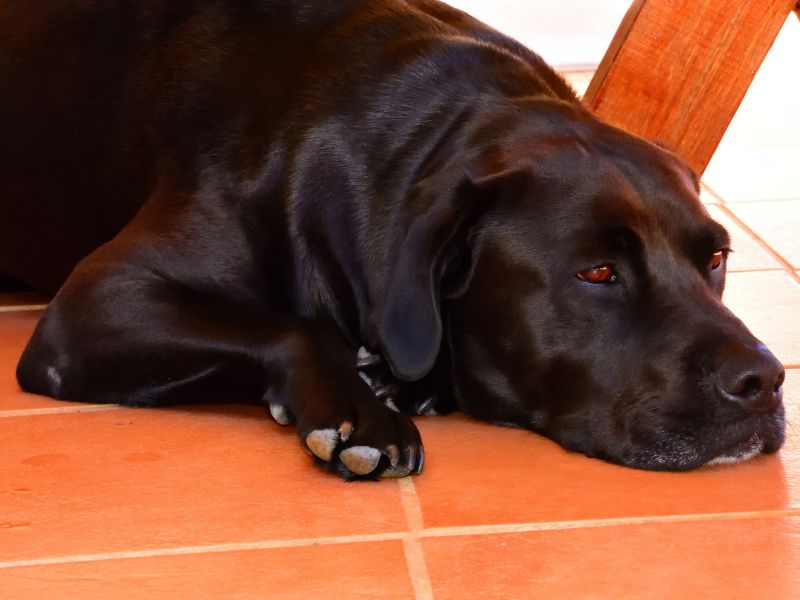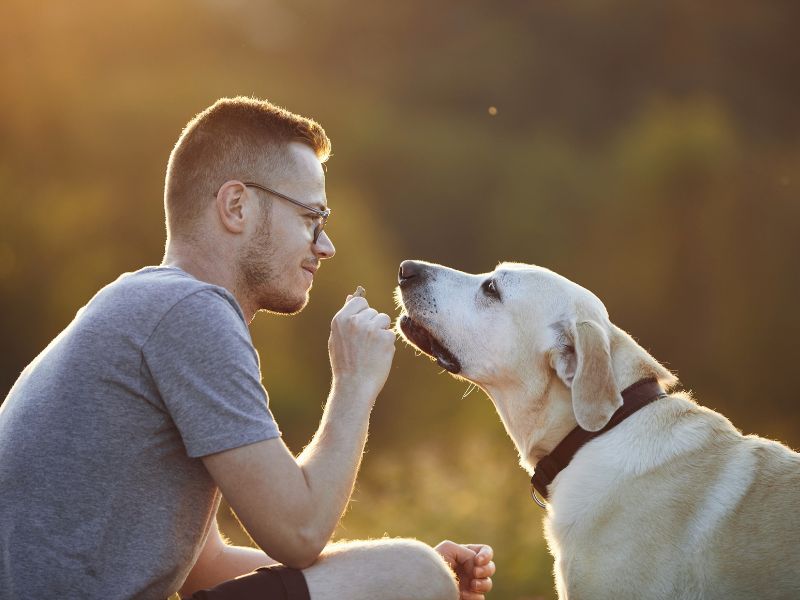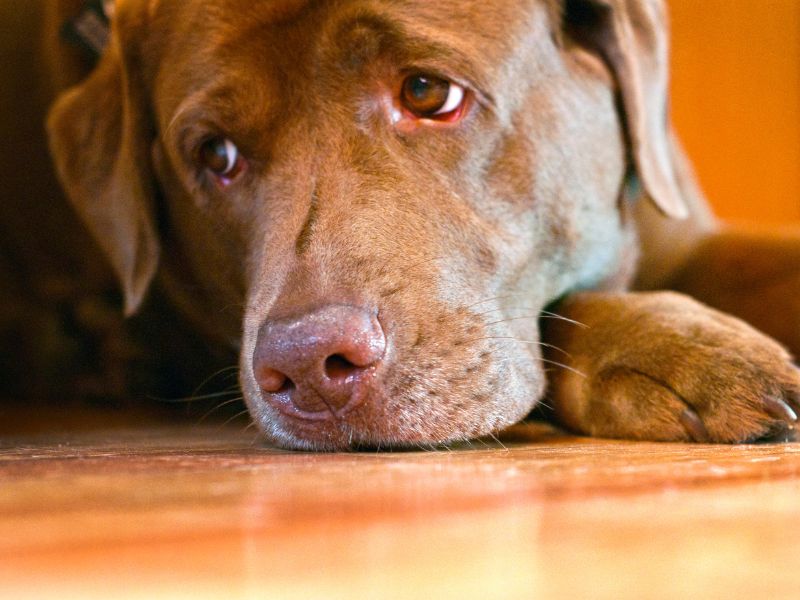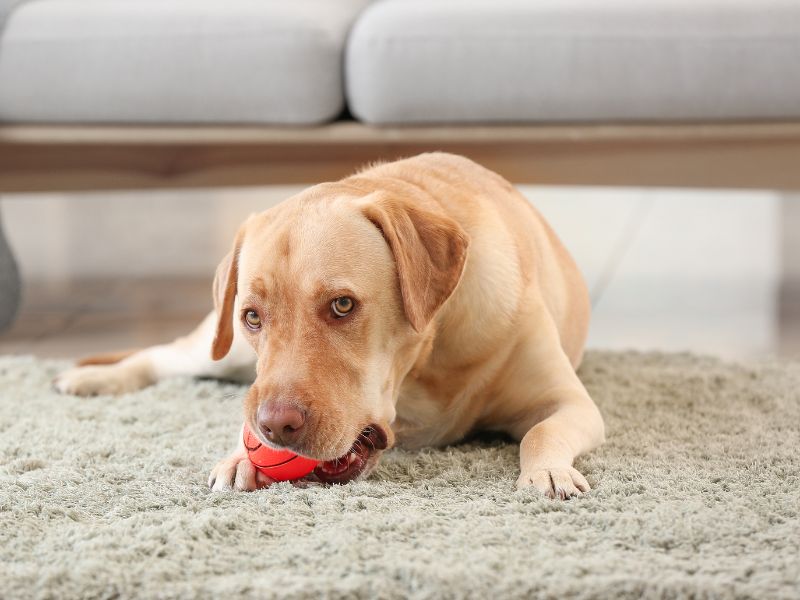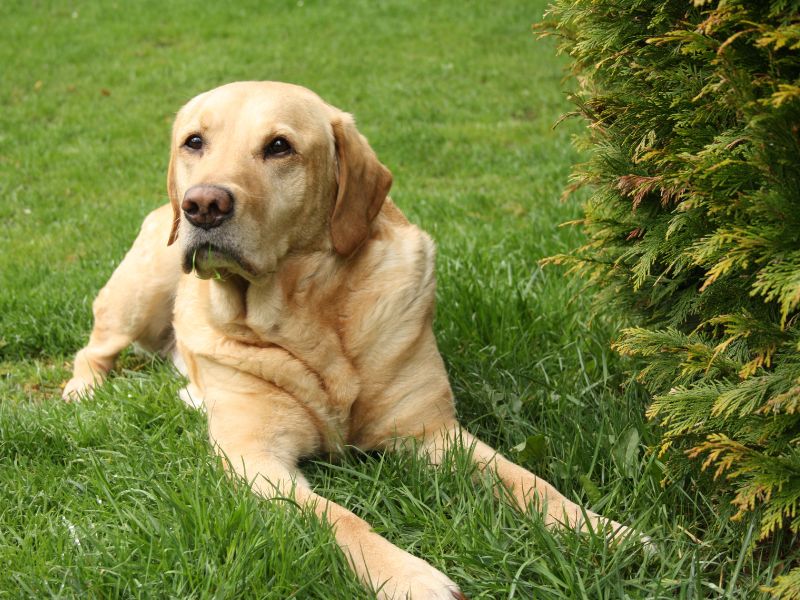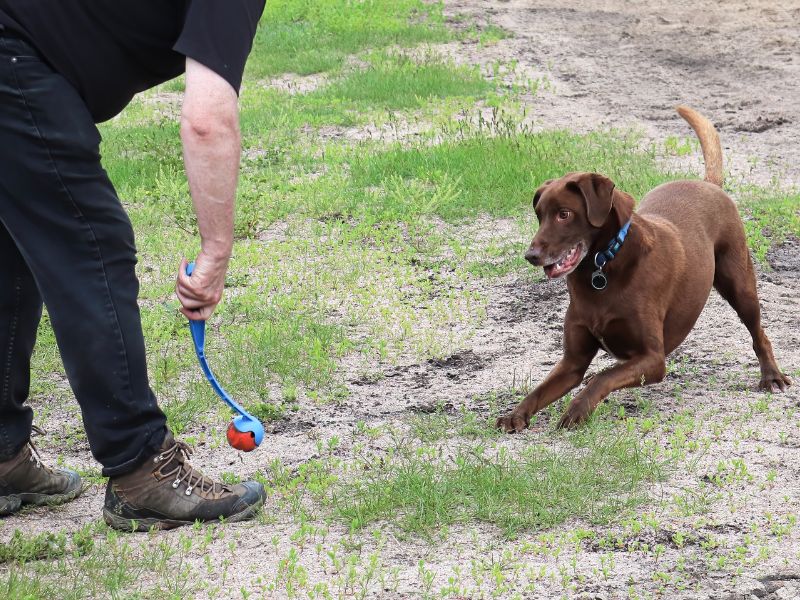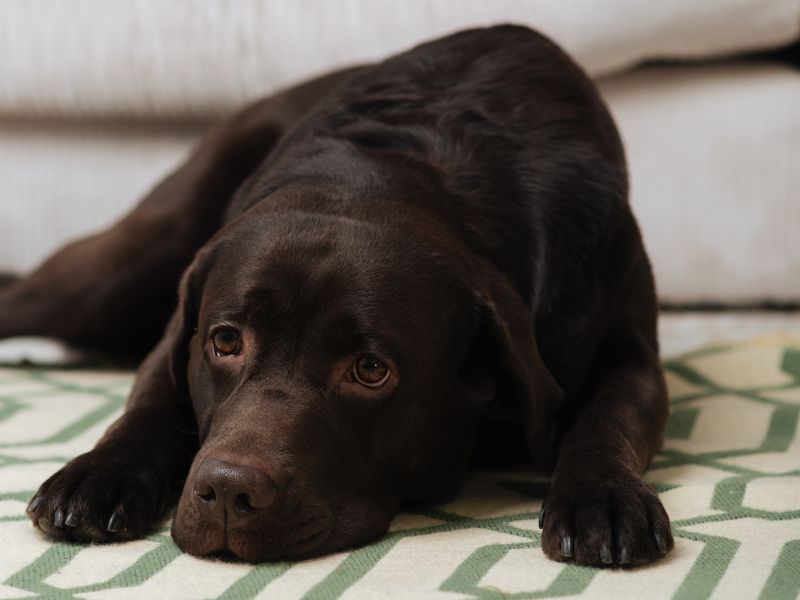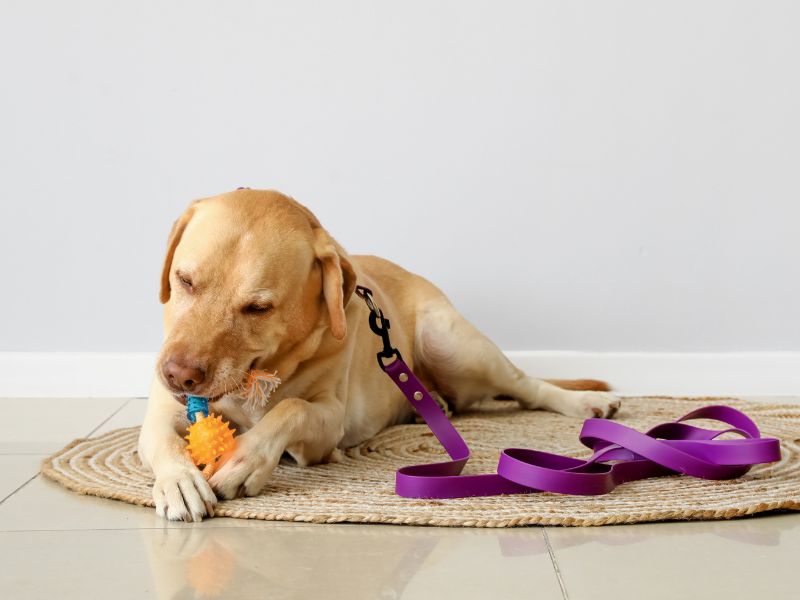
Leaving your dog home alone can be a concern for many pet owners. It’s essential to understand that each dog’s ability to cope with being alone varies depending on factors such as age, physical and emotional needs, and temperament. With proper preparation and management, it is possible to make the experience of staying home alone more comfortable for your furry friend.
Most dogs can handle being home alone for eight to ten hours, although it’s always better to assess your dog’s individual needs. The key to helping your dog successfully stay home alone is to teach them gradually, ensuring they feel secure and confident in their environment. Providing mental stimulation, establishing routines, and making sure your dog remains safe when alone are crucial aspects to consider.
As a dog owner, it’s your responsibility to understand and cater to your dog’s needs while ensuring their well-being when left alone. By taking the time to teach your dog to be comfortable at home on their own, you can effectively balance your own needs and those of your pet. With patience and consistency, your dog can learn to enjoy their alone time, making your absences worry-free and guilt-free for both of you.
Can You Leave Your Dog Home Alone While You Work?
Leaving a dog home alone while at work can be a challenging situation for both the dog and the owner. Dogs may experience anxiety and stress when their owners leave the house, while owners may feel guilty for leaving their furry friends alone. But with the right approach, it’s possible to ensure that pets are safe, secure, and content during the day.
First, it’s crucial to determine how long a dog can be left home alone without causing harm or distress. This depends on various factors, including the dog’s age, breed, health, and personality. Puppies have different needs compared to adult dogs, and their bladder control might be limited. According to the American Kennel Club (AKC), puppies up to 10 weeks old can hold their bladder for only 1 hour, those between 10-12 weeks old for 2 hours, and 3-month-old puppies for up to an hour per month of age. Adult dogs should generally not be left alone for more than 6-8 hours a day.
Here are some tips for preparing your dog for time alone at home:
- Establish a routine: Create a consistent schedule for your dog’s feeding, exercise, and bathroom breaks. Dogs appreciate structure, and having a routine will help them understand when they’ll be home alone and when to expect their owner.
- Provide mental stimulation: To prevent boredom and anxiety, offer your dog toys or puzzles that can keep their mind occupied while you’re away.
- Create a safe space: Set aside a comfortable space for your dog to relax while you’re gone. It could be a favorite corner of the living room or a cozy crate. Make sure the area is free of hazards and has a comfortable surface for your dog to lie on, as well as access to fresh water.
- Consider hiring a pet sitter or walker: If your dog needs extra care or assistance during the day, you may want to hire a professional pet sitter or dog walker to visit your home. This can be especially beneficial for puppies or dogs with separation anxiety.
The most important thing is to pay attention to your dog’s individual needs, invest time in training, and learn to recognize signs of stress or anxiety. By following these tips, owners can help support their dogs in coping with time alone while they’re at work and maintain a harmonious relationship with their pets.
Dogs Are Social
Dogs are known to be highly social creatures, which plays a significant role in their strong bond with humans. Just like people, dogs thrive on social interactions and enjoy spending time with their human family members. This is an important aspect to consider when leaving your dog home alone, as extended periods of isolation can lead to stress and anxiety.
Dog owners may wonder how their pets cope with being home alone and if it could harm their well-being. It is safe to say that companion dogs do need social closeness with humans. Deprivation of this contact poses welfare concerns, as many dogs tend to become stressed when they are left alone. Evidence suggests that cortisol levels in dogs increase with prolonged periods of isolation.
On the other hand, it’s important to teach dogs how to self-soothe and cope with being alone. This can prevent canine separation anxiety and build confidence in your furry friend. Finding ways to improve their alone time can help create a positive environment, making it easier for both you and your dog to handle separation. This may include providing interactive toys or puzzle feeders to keep them engaged while you are away.
Supporting your dog’s social nature is essential for their overall happiness and well-being. By understanding their social nature and taking small steps to improve their alone time, you can make a significant impact on their quality of life. Remember that balance is key, and giving your dog plenty of social interactions and exercise, as well as practicing moments of being alone, can provide them with a fulfilling and comfortable life.
Are Dogs Happy Home Alone?
Dogs are social animals, and they often prefer to be with their human companions or other animals. However, it is important to recognize that each dog has its own individual personality, temperament, and needs. While some dogs may be content being home alone for a few hours, others may experience separation anxiety or stress.
It is essential to gradually introduce the concept of being home alone to your dog, starting with short periods and gradually increasing the duration. This process can help your dog feel more comfortable and secure when you’re not around. Providing your dog with toys, puzzles, and soothing music can also help keep them entertained and reduce stress during alone time.
Different breeds of dogs may have varying levels of independence, which also influences their ability to be alone. For example, specific breeds like Greyhounds and Shiba Inus are known to be more independent and may handle alone time better than others. It’s important to understand your dog’s breed and its natural tendencies before leaving them alone for extended periods.
Despite their independence, even the most independent dogs crave interaction and socialization, so it’s essential to ensure that your dog gets adequate exercise, mental stimulation, and quality time with you when you’re at home. Regular exercise and attention can lead to a happier and healthier dog overall.
In summary, while dogs may not necessarily be “happy” home alone, there are steps you can take to ease their stress and discomfort. By understanding your dog’s breed, temperament, and individual needs, you can create a comfortable environment for your dog even when you’re away.
Advice from Working Pet Parents
Working pet parents often face the challenge of leaving their dogs home alone. To ensure their furry friend stays safe and content, they implement various strategies. Here are some valuable suggestions from experienced pet parents.
Firstly, providing a comfortable and secure environment is essential. A dog crate can be used to prevent destructive tendencies and create a safe space for your dog while you’re at work. PetMD recommends using dog crates, especially for dogs prone to exploring every corner of the house.
To help your dog feel more at ease, create a designated play area where they can have access to toys and entertainment. Rotating toys can keep them busy and engaged throughout the day. Puzzle toys and interactive feeders are great options for mental stimulation.
Furthermore, pet parents must pay attention to dog-proofing their homes. Lock away trash receptacles, hazardous chemicals like cleaning supplies and medications, and ensure your pet doesn’t have access to chewing hazards. Cover electrical outlets and remove any small, chewable objects such as shoes or craft supplies.
Establishing a routine is also crucial for your dog’s well-being. Consistent walks or playtimes before and after work can help your dog understand when you’ll be absent and when to expect your return. A consistent schedule can reduce separation anxiety and help keep your dog relaxed while you’re at work.
In more extreme cases of separation anxiety, utilizing doggy daycare services, hiring a pet sitter, or asking a friend or neighbor to take your dog for a walk during the day can provide additional comfort, socialization, and relief for your pet.
In conclusion, remember that every dog is different. Evaluate your dog’s specific needs, and develop a plan that meets those requirements while maintaining their safety and happiness when left home alone. Addressing these challenges will create a more enjoyable experience for both you and your beloved pet.
Get Pippa’s Training Tips!
Pippa Mattinson is an experienced dog trainer who shares her expertise through free dog training tips available online. Her tips cover a wide range of topics, from specific exercises like heel work and recall, to general advice on getting your dog’s attention, avoiding common mistakes, and remaining motivated throughout the training journey.
One aspect Pippa addresses is teaching dogs to stay home alone. This is an important skill to make sure your furry companion feels secure and relaxed when you’re away from home, whether just running errands or going to work for the day. Pippa’s approach to training emphasizes setting you and your dog up for success.
To begin, Pippa advises starting with basic obedience exercises, including teaching your dog to go to their bed and stay there for a short while with you present. Remember to reward your dog for remaining quietly in their designated spot. This helps build trust and instill a sense of calm, even when you’re not around.
Once your dog has the hang of this initial exercise, Pippa recommends gradually working on separation. Encourage your dog to stay in their bed while you move away, then return to reward them for staying put. This step-by-step approach makes it easier for your dog to learn how to cope with being alone.
Pippa’s dog training tips are completely free, and anyone can benefit from her forty years of hands-on experience. Her practical advice and easy-to-follow instructions make it simple to incorporate training into daily routines. Give Pippa’s strategies a try and start helping your dog feel more confident and comfortable when you’re away from home.
Breaking up Your Dog’s Day
A dog’s well-being is essential, and breaking up their day when you are not at home can contribute to their mental and physical health. One recommendation is to spend 20-30 minutes engaging your dog in a brisk walk or play session before leaving them home alone. Tiring your dog out helps ensure their time alone is more relaxing and enjoyable.
Throughout the day, consider enlisting the help of a dog walker or pet sitter to help break up your dog’s alone time. This can provide some much-needed social interaction and physical activity for your pet. To find a reliable dog walker, try to get a referral from someone you trust.
Another option is to provide your dog with interactive toys and puzzles to keep them entertained while home alone. These items can mentally stimulate your pet and help prevent boredom, which can lead to destructive behaviors or anxiety.
Remember to pay attention to your dog’s behavior upon returning home. If you notice any changes, such as increased lethargy, depression, or disinterest in activities they once enjoyed, it could be a sign that your dog is experiencing difficulties with being home alone for too long. Consult with your veterinarian to rule out any medical issues and consider adjusting your dog’s daily routine to alleviate their stress.
By taking the time to break up your dog’s day with exercise, social interaction, and mental stimulation, you can ensure a happier, healthier home-alone experience for your beloved pet.
How Long Can You Leave A Dog Alone?
Leaving a dog home alone may sometimes be unavoidable, but it’s essential to know how long is appropriate to ensure your pet’s comfort and well-being. The length of time a dog can be left alone depends on factors such as their age, physical, and emotional needs.
For puppies, it is generally advised not to leave them alone for long periods. At 10-12 weeks, they can only hold their bladder for a maximum of 2 hours. As they grow, every month they can increase their bladder control by an hour, up to a maximum of 6-8 hours once they’re adults.
Adult dogs, on the other hand, have better bladder control and can typically be left home alone for about 8-10 hours. However, it is crucial to assess each dog individually, as breed, temperament, and medical conditions can affect how long they can comfortably stay alone.
It’s important to remember that dogs, especially puppies, need to urinate often. Here’s a helpful guideline for leaving your pup alone:
- 4 months: 4 hours
- 5 months: 5 hours
- 6 months: 6 hours
- Over 6 months: Maximum 6-8 hours
Please note that these guidelines are not definitive, and every dog is different. Some dogs may require more frequent breaks or human interaction. Always consider your pet’s specific needs and consult with a veterinarian if you have concerns about leaving them alone for extended periods.
Can You Leave Your Puppy Home Alone?
Leaving a puppy home alone is a common concern for new pet owners. It is important to know that each puppy is unique, and their ability to stay home alone depends on their age, physical and emotional needs.
When considering leaving a puppy home alone for the first time, make sure they are ready and have had adequate time to adjust to their new environment. Ideally, this should not happen within the first few days of bringing them home.
One factor to consider is your puppy’s bladder control. Older puppies may have better bladder control and can hold their urine for longer periods, whereas younger puppies may need more frequent potty breaks.
To help your puppy cope during their time alone, you can follow these tips:
- Create a safe and comfortable space for them, such as a crate or a playpen with their bed, toys, and water.
- Build up the time they spend alone gradually, starting with short periods and gradually increasing them as your puppy becomes more comfortable.
- Provide mental and physical stimulation before leaving them alone, such as a walk or playtime, to help them expend energy and feel content.
- Establish a routine to help your puppy understand when you’ll be gone and when they can expect your return, giving them a sense of security.
While you may have obligations that require you to be away from your puppy, it’s important to balance their need for socialization, stimulation, and companionship. Depending on your puppy’s age, breed, and individual needs, consider asking a friend or hiring a pet sitter or dog walker to help during those times.
In summary, leaving your puppy home alone is possible, but it’s essential to ensure they are prepared, mentally and physically equipped, and have a routine in place for when you are away.
Should I Leave My Dog Home Alone?
Leaving your dog home alone can be a difficult decision for many pet owners. However, it is an inevitable part of life that requires the right knowledge and preparation. It is important to understand that the duration a dog can stay home alone depends on their age, physical, and emotional needs.
Most adult dogs can manage being home alone for eight to ten hours, depending on their individual needs and temperament. Crate training can be helpful in ensuring your dog stays safe and comfortable during the time you’re away. Be sure to provide them with a secure, comfortable crate, and gradually increase the time they spend in it to build their confidence.
Puppies, on the other hand, require more attention and frequent bathroom breaks. Their limit for staying alone is much shorter, usually no longer than six to eight hours. It is essential to teach them how to be alone and gradually increase their alone time.
When leaving your dog alone, take precautions to ensure their safety. Keep hazardous items out of reach, such as toxic plants, medications, or any objects they could potentially swallow. In addition, ensure they have access to fresh water and a comfortable space to rest.
While it is possible to leave your dog home alone, it is important to be mindful of their needs and make sure they’re comfortable and safe. Remember that every dog is different, and it’s crucial to monitor and adjust according to your dog’s specific requirements.

